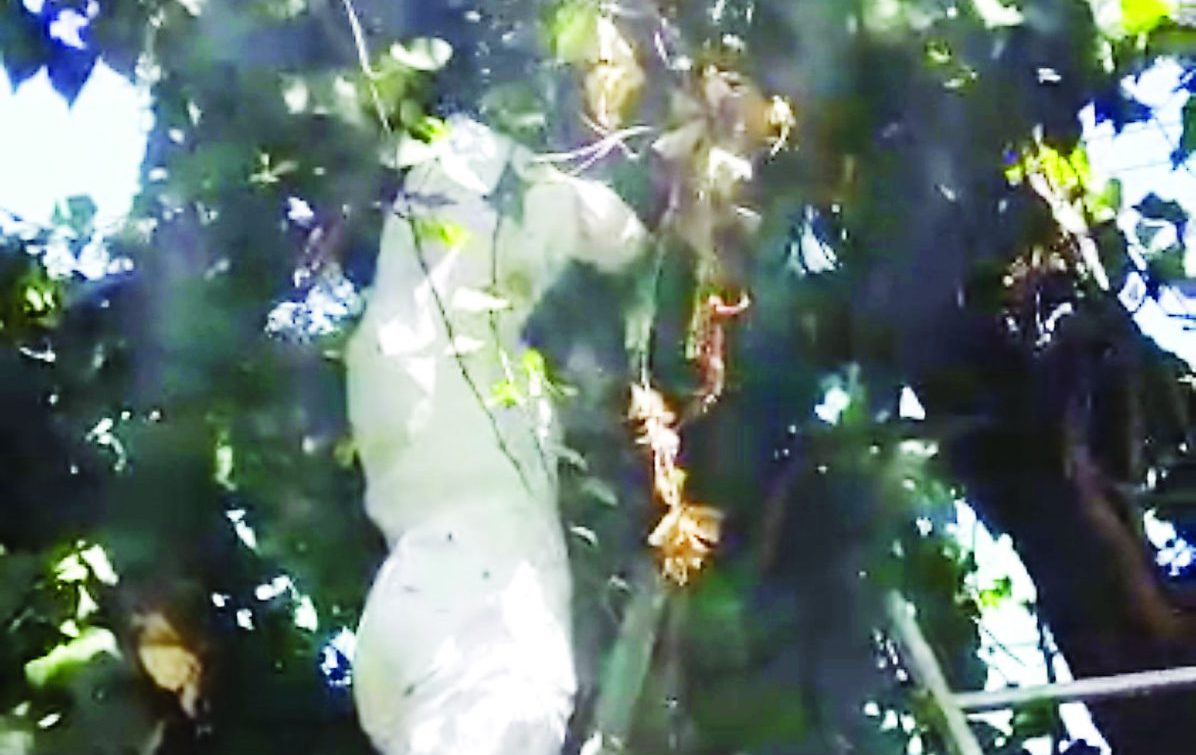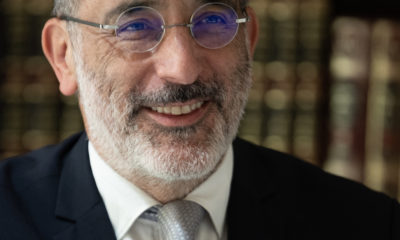
Parshot/Festivals

In homage to the honey-makers
As Jewish people around the world mark the sweetness of a new year with apples dipped in honey, the SA Jewish Report delved behind the scenes to uncover the buzz about bees and their keepers who bring this Rosh Hashanah ritual to fruition.
“I used to be such a kugel! Now I smell of pine-needle smoke and I look like I don’t know what anymore!” says Cape Town Herzlia School alumnus, and now hive head honcho Susanne Hassenstein.
“From immaculate makeup, high heels, and oh-my-gosh everything, to a rough-and-ready beekeeper that’s up on the roof or in a cherry picker 10m up high – and I love it!” she says.
For fellow Capetonian apiarist André Lazarus, catching a swarm of bees is the highlight of his hobby. “It sounds crazy, but that sound they make, it’s like Beethoven’s ninth symphony to me!
“Look, we are a crazy bunch!” he chuckles. “You would actually physically have to put a suit on and go work with a beekeeper to understand what a fantastic little creature this is.”
Lazarus, now 65, had his first encounter with a bee while growing up on a smallholding. “I got stung at the age of six. I tried to save a honey bee from drowning.”
By the time he was 13, he had caught his own swarm. Since then, has never looked back, keeping hives, conducting removals, and making his own honey.
Hassenstein became intrigued many years ago after discovering a colony of bees outside her bedroom. A friend, who was a beekeeper, safely relocated them to a hive and then challenged her that she wouldn’t be able to maintain them.
“Don’t ever say to a woman that you can’t!” she asserts with a laugh explaining how she then embarked on course after course to hone her craft, becoming, of course, the queen bee she is today!
Both Hassenstein and Lazarus wax lyrical about the wonder of bees and the intricate workings of colonies.
“Bees are so deep. There is so much to them and to beekeeping. It feels like the more I know, the less I know. Bees are so intelligent,” says Hassenstein.
For example, she says, humans could learn a lot from the social structure of bees.
“Everybody thinks that the queen is in charge. She’s not; she keeps harmony in the hives with her pheromones. She makes no decisions whatsoever. The bees make the decisions.”
Instead of top-down governance, Hassenstein says bees offer a blueprint for true equity. “I wish we could have the same, because we would have much more peace and harmony in the world.”
Lazarus concurs that the wisdom of bees is vast. For example, the communication of the queen to the workers via pheromones, called giving “audience to her workers”, is a system that operates “faster than any computer that’s been designed today”.
Both Lazarus and Hassenstein refer to how varied different bees’ roles are. Lazarus points out that bees even have “undertakers” who take the dead out of the hive to avoid invasion by ants. Hassenstein recalls how “teenagers” let loose after a long day of hive duty.
“At about three weeks old, in the afternoon, they will come out and fly in the shape of an eight, an orientation flight to take a geographic view of their hives,” she says.
Ultimately, bees aren’t just interesting, they are a core part of the earth’s survival.
“Really, what it comes down to is that without bees, the world would die of starvation,” says conservationist Ilana Stein.
At the core of Torah values is environmental care, as shown in Genesis 2:15, “When G-d places the human being in the Garden of Eden to work it and guard it: the idea of guarding meaning it’s something precious that can be lost,” she says.
Stein says that bees, as a metaphor, appear in Devarim 1:44, with Moshe describing Israel pursued by the Amorites like bee swarms.
There is also an allusion to them in the story of Devorah, the prophet, as her name is Hebrew for bees.
While there is no direct reference to the meaning behind her name, “we can draw out of it an explanation that a bee is a creature that is completely altruistic, only working for and protecting the hive”, muses Stein.
She also notes that in the Kuzari, an ancient text on Jewish philosophy dating back to 1140, bees are seen as a way to prove G-d’s existence. According to the text, “the proof that He is their Creator may be found in the circumstance already mentioned, that His wisdom and power observable in the creation of the ant and bee is not less than in that of the sun and its sphere. The traces of this providence and wisdom are finer and more wonderful in the ant and bee, because, in spite of their minuteness, He put faculties and organs into them.”
When it comes to honey, the sweet substance – although often a reference to date honey rather than that of bees – is “mentioned everywhere and often metaphorically”.
“Rabbenu Bechaya in his introduction to his commentary on the Torah states that all wisdom contains within it some impurities or mistakes,” Stein says. “The posuk in Shir Hashirim states that ‘sweetness drips from your lips, bride, but honey and milk lies under your tongue’. Rabbenu Bechaya explains that sweetness refers to all areas of wisdom, whereas the honey and milk refers to the Torah. The Torah is compared to honey and milk, for just as they are pure and unadulterated, so too is the Torah pure and without imperfections.”
Indeed, for Lazarus, there is nothing more miraculous than a substance that the very best of modern science has never been able to replicate. Until today, he feels the sacred nature of his hobby when out on the mountains where his hives are kept.
“In my little world of the honey bee, it’s so peaceful, you could be talking to G-d,” he says.










